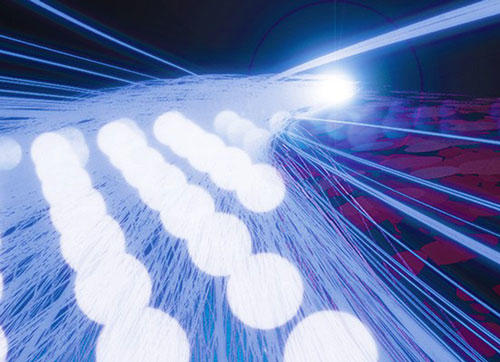Long Range Entanglement
Entanglement at Long Range Is Faster Than Expected

Entanglement is arguably the strangest of the many strange phenomena in quantum mechanics. In this exotic condition, two or more objects become so inextricably connected to one another that they cannot be described individually, but only in terms of a group state. When measurements are made on some property of entangled objects, the values are inevitably correlated – even when the objects are so far apart at the time of measurement that no information could have traveled between them.
Many scientists believe that groups of entangled objects will be an essential component of an eventual quantum computer – a device that can exploit the behavior of quantum objects and systems to solve problems that are intractable even with today's best supercomputers.
The onset of entanglement has been widely studied, and much is known about how correlations form over short distances, for example between two adjacent atoms. But little has been understood about how long-range interactions affect the build-up of entanglement. The new results, derived from quantum operations performed on a string of 11 ions and described in the journal Nature, indicate that in such systems entanglement can build up faster than in short-range interacting systems. A theoretical examination of the physics issues involved appears in Physical Review Letters.
For a detailed description of the experiment and its significance, see the report on the Joint Quantum Institute website.
* The Joint Quantum Institute (JQI) is a research partnership between NIST and the University of Maryland at College Park (UMD). Co-authors Alexey Gorshkov and Prof. Christopher Monroe of UMD, whose group conducted the experimental work, are Fellows of JQI. Postdoctoral researcher Michael Foss-Feig of the Quantum Measurement Division is a co-author of both the Nature and Physical Review Letters papers, as is Spyridon Michalakis of Caltech.

